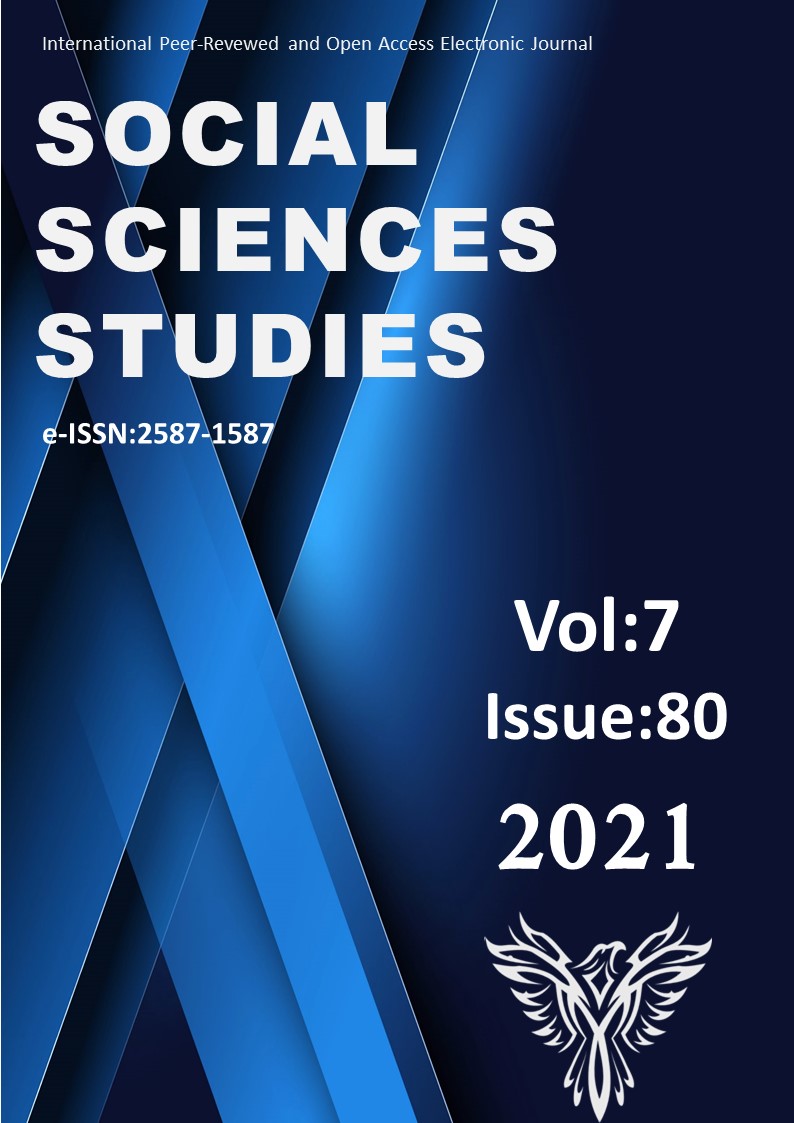Author :
Abstract
Amaç: Bu araştırma Pandemi dönemindeki sağlık çalışanlarının işe bağlı gerginlik düzeylerini belirlemek, bunların bazı demografik özellikleri ile mesleksel değişkenlerinin ilişkisini incelemek amacıyla yapıldı. Yöntem: Nicel yaklaşımının kullanıldığı bu çalışma, genel tarama modeline dayalı betimsel bir araştırmadır. Araştırmanın örneklemi sosyal medya kullanan ve çevrimiçi ortamda araştırmaya destek olmayı kabul eden 788 sağlık çalışanı oluşturmaktadır. Araştırmada veri toplama aracı olarak demografik bilgiler içeren anket formu ve İşe Bağlı Gerginlik Ölçeği (İBGÖ) kullanılarak toplanmıştır. Veriler SPSS 20,0 programı kullanılarak analiz edilmiştir. Katılımcıların sosyo-demografik özellikleri ile Sağlık Çalışanların Sağlık Bakanlığının corona virüse karşı 14 kuralına toplumun uyumuna yönelik düşünceleri ile ilgili görüşlerini hesaplamada betimsel istatistik yöntemi, Levene’s homojenlik testi uygulanmış, bu testin sonucuna göre bağımsız örnek t-testi, tek yönlü varyans analizi (ANOVA), testi ve Post Hoc (LSD) testi kullanılmıştır. Bulgular: Katılımcıların sosyo-demografik özelliklerinden eğitim değişkeni ve işe bağlı gerginlik ölçeğine ilişkin yapılan testinin sonu göre istatistiksel olarak anlamlı bir farklılık gösterdiği tespit edilmiştir (F= 5,377; p<0,05). Sağlık çalışanlarının meslekleri ile işe bağlı gerginlik ölçeğine ilişkin yapılan testinin sonu göre istatistiksel olarak anlamlı bir farklılık gösterdiği tespit edilmiştir (F= 2,906; p<0,05). Sağlık çalışanlarının pandemi sürecinde çevredekilerin sağlıkçılara bakış algısıyla meslekleri ile işe bağlı gerginlik ölçeğine ilişkin yapılan testinin sonu göre istatistiksel olarak anlamlı bir farklılık gösterdiği tespit edilmiştir (F= 13,592; p<0,05). Sonuç: Tükenmişlik ve işe bağlı gerginliği azaltmak için, yoğun çalışma şartları ve iş ortamındaki sorunlar iyileştirilmeli, birimler arası rotasyon, motivasyon ve yönetime katılım gibi uygulamalar üzerinde durulmalıdır.
Keywords
Abstract
Objective: This research for identified the levels of work-related tension levels of health workers and to examinated the relationship between some demographic features and occupational variables. Method: This study, in which quantitative approach is used, is a descriptive research based on general survey model. The sample of the study consists of 788 healthcare workers who use social media and agree to support the research online. Data were collected using a questionnaire containing demographic information and Work-Related Tension Scale (IASP) as data collection tools. The data were analyzed using the SPSS 20.0 program. Descriptive statistics method, Levene's homogeneity test was applied to calculate the socio-demographic characteristics of the participants and the opinions of Healthcare Employees regarding the opinions of the Ministry of Health regarding the compliance of the society against the corona virus 14 rules, according to the result of this test, the independent sample t-test, one-way analysis of variance (ANOVA), test and Post Hoc (LSD) test were used. Results: It was determined that there was a statistically significant difference according to the end of the test regarding the education variable and work-related tension scale from the socio-demographic characteristics of the participants. (F= 5,377; p<0,05). It was determined that there was a statistically significant difference compared to the end of the test of healthcare workers regarding their profession and work-related tension scale (F = 2.906; p <0.05). During the pandemic process, it was determined that the healthcare professionals showed a statistically significant difference between the perception of the people around them and their perception of the healthcare professionals compared to the end of the test regarding their occupation and work-related tension scale (F = 13.592; p <0.05). Conclusion: In order to reduce work-related tension, intensive working conditions and problems in the work environment should be improved, and practices such as inter-unit rotation, job enrichment, motivation and participation in management should be emphasized.
